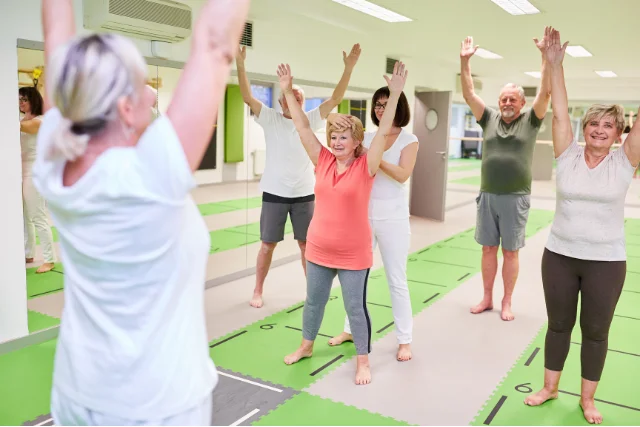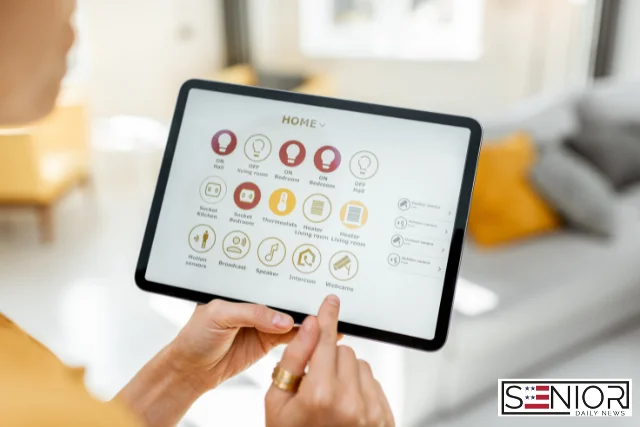The Benefits of Group Fitness Classes for Motivation: A Senior’s Guide

Staying active is essential for good health, especially as we age. But let’s face it—getting motivated to exercise isn’t always easy. Whether it’s the chilly weather, feeling a little stiff, or simply lacking enthusiasm, we all have days when working out feels like a chore. That’s where group fitness classes come in—and for seniors in the United States, they offer more than just exercise. They offer community, structure, and a whole lot of fun.
In this article, we’ll explore how group fitness classes can boost your motivation, improve your physical and mental health, and give you a reason to look forward to getting active. Even if you’re new to working out or haven’t exercised in a while, there’s something here for everyone.
Why Motivation Matters More as We Age
As we get older, staying active becomes even more important. Exercise helps manage weight, reduce the risk of chronic diseases, maintain mobility, and even boost mood. But older adults often face barriers to physical activity—like chronic pain, limited transportation, or just feeling out of place at the gym.
That’s why group fitness classes are such a powerful tool. They don’t just get your heart pumping—they get you connected with others, which can make all the difference when it comes to sticking with an exercise routine.
What Are Group Fitness Classes?
Group fitness classes are organized exercise sessions led by a trained instructor and designed for multiple participants. They can range from gentle stretching to high-energy dance sessions, and everything in between. Some popular classes for seniors include:
- Chair yoga
- SilverSneakers
- Water aerobics
- Tai chi
- Walking groups
- Low-impact dance or Zumba Gold
- Pilates or stretching classes
These classes are usually offered at community centers, local gyms, senior centers, or even online through virtual platforms.
1. Social Connection: A Natural Motivator
One of the biggest advantages of group fitness classes is the built-in social connection. Humans are social by nature—and seniors are no exception.
- You’ll make friends. Regularly attending classes means seeing the same faces and forming bonds.
- Accountability. Knowing your classmates or instructor will notice if you skip a session can encourage you to show up.
- Shared goals. Working out alongside others with similar goals makes the experience feel more meaningful.
The emotional support of peers can be just as motivating as the workout itself.
2. Routine and Structure
Many seniors find comfort in routine. Group classes are scheduled events, which helps create consistency.
- Predictability reduces decision fatigue. You don’t have to decide each day whether or not to exercise.
- Better time management. Having a class at 10 a.m. every Monday, Wednesday, and Friday builds a sense of purpose into your week.
Regular physical activity becomes a habit, not a chore.
3. Professional Guidance for Safety and Progress
Most group fitness classes are led by certified instructors who understand the needs of older adults.
- Modifications are offered. Can’t kneel? Need to sit? Instructors often give options.
- Prevent injury. A trained professional will help you use proper form.
- Track your progress. Instructors may offer feedback or suggestions to help you improve safely over time.
This kind of support is especially helpful for seniors with arthritis, balance issues, or heart conditions.
4. Mental Health Benefits
Group exercise isn’t just good for your body—it’s great for your brain too.
- Reduces depression and anxiety. Moving your body and socializing are proven mood boosters.
- Increases self-confidence. Reaching fitness milestones, no matter how small, builds a sense of accomplishment.
- Enhances cognitive function. Exercise has been linked to better memory and reduced risk of dementia.
And let’s be honest—laughing, dancing, or simply chatting with others makes exercise a lot more enjoyable.
5. Adaptable to Your Fitness Level
Whether you’re a seasoned exerciser or just getting started, there’s a group class for you.
- Low-impact options. These are gentle on joints but still effective.
- Beginner-friendly. Many classes are designed specifically for older adults.
- Progress at your own pace. You can always take breaks or modify movements.
It’s never too late to start. Many seniors in their 70s, 80s, and even 90s are finding renewed energy through group fitness.
6. Affordable and Accessible
You don’t need a pricey gym membership to participate.
- Medicare Advantage Plans. Many include free access to programs like SilverSneakers.
- Community centers. Often offer low-cost or free fitness classes.
- Online classes. Free or affordable virtual options are available through YouTube, Zoom, or fitness apps.
Accessibility means more seniors can participate, no matter their income or location.
Tips for Getting Started
If you’re new to group fitness, here are some tips to help you feel confident:
- Start slow. Don’t feel like you need to keep up with everyone right away.
- Talk to your doctor. Especially if you have chronic conditions or haven’t exercised in a while.
- Bring a friend. Joining with a buddy can ease nerves and boost motivation.
- Try different classes. You might enjoy water aerobics more than yoga—or vice versa.
- Dress comfortably. Wear breathable clothing and supportive shoes.
Common Concerns—and How to Overcome Them
“I’m not fit enough to join a class.” You don’t need to be in shape to get started. That’s what the classes are for! Instructors are trained to help everyone feel welcome.
“I feel self-conscious.” Everyone is focused on their own journey. You’ll quickly find that group fitness classes are encouraging, not judgmental.
“What if I can’t keep up?” You’re allowed to go at your own pace. It’s about moving and feeling better—not competing.
Success Stories from Senior Fitness Participants
- Margaret, 72: “I was nervous at first, but now my water aerobics class is the highlight of my week. I feel stronger and have made some wonderful friends.”
- Frank, 80: “After retiring, I needed something to keep me active. Tai chi gave me balance—literally and mentally.”
- Helen, 67: “Group Zumba helped me lose weight, but more importantly, I laugh and smile every class. It’s fun!”
FAQs
Q: Are group fitness classes safe for seniors? A: Yes, especially those designed for older adults. Look for certified instructors and classes that offer modifications. Always consult with your doctor first.
Q: How often should I attend group fitness classes? A: Aim for at least 2–3 times a week to start. As you build stamina, you can increase frequency if you wish.
Q: Can I join a class if I have arthritis or a chronic condition? A: Absolutely. Many classes, such as chair yoga or water aerobics, are specifically designed to be gentle on joints and supportive for people with chronic conditions.
Q: What should I bring to class? A: Bring water, a towel, comfortable clothing, and any necessary medications. Some classes may require mats or light weights, but instructors usually provide guidance.
Q: Are virtual fitness classes effective? A: Yes! Virtual classes are a great option if you prefer to exercise at home. They offer the same structure and instructor guidance, often with the added bonus of replay options
Image Designed Using Canva






